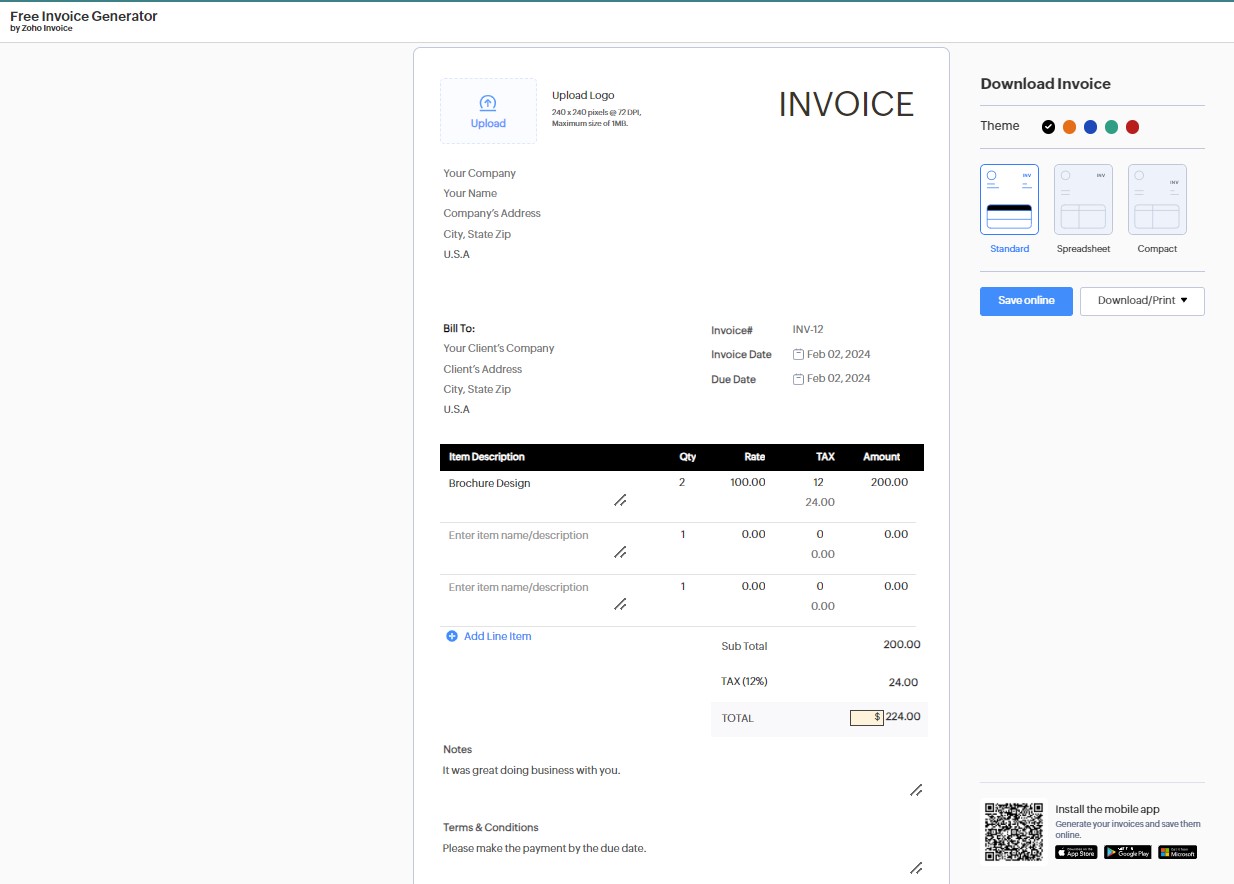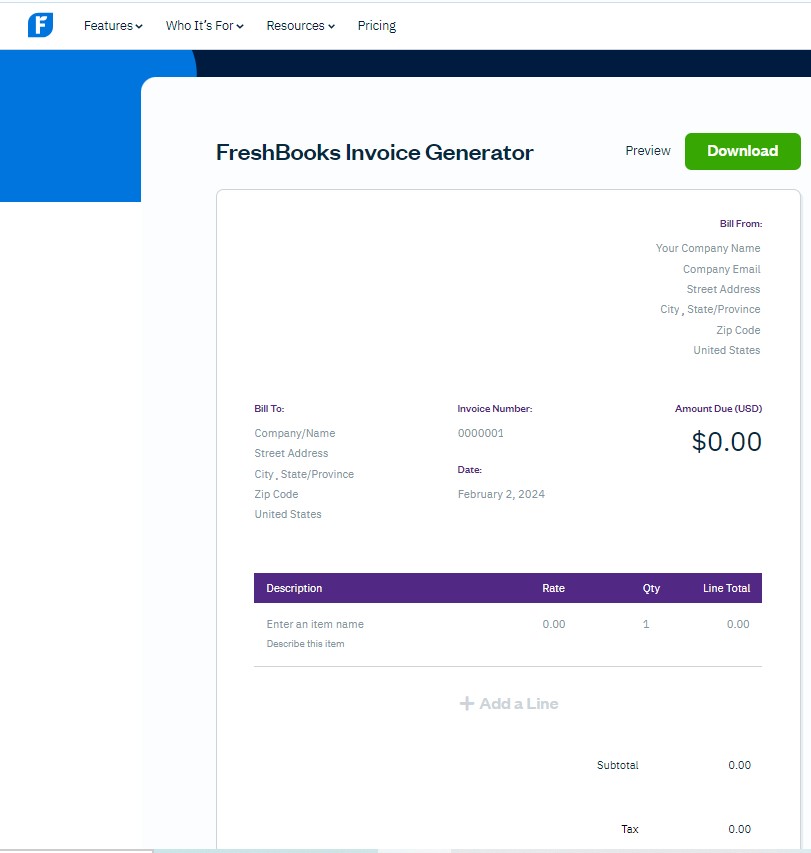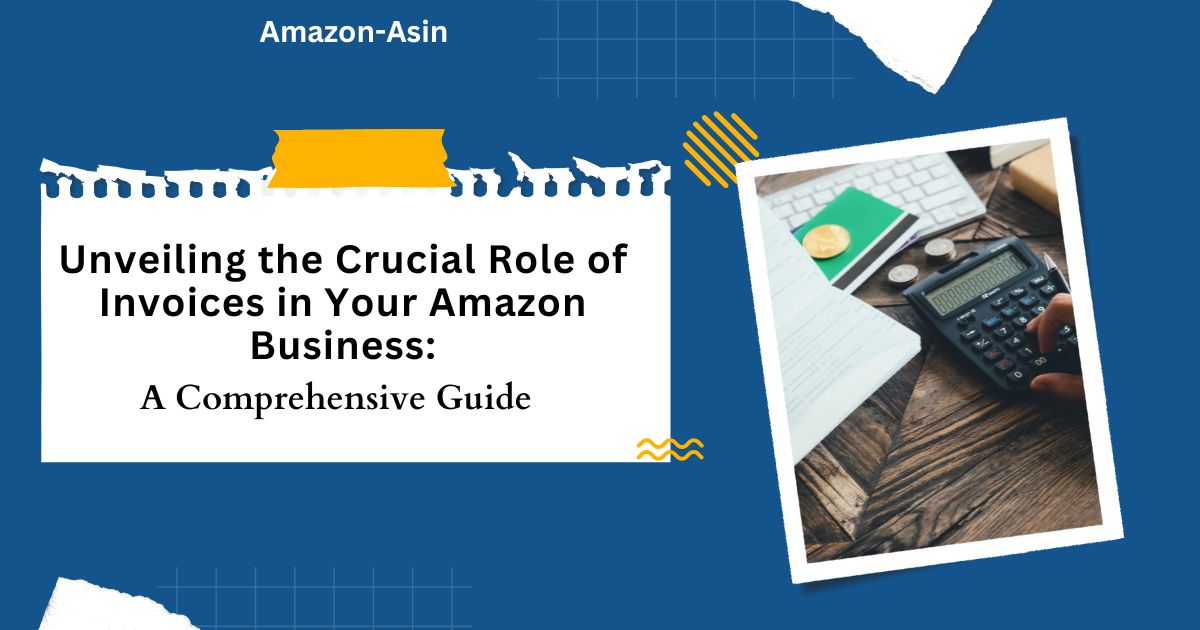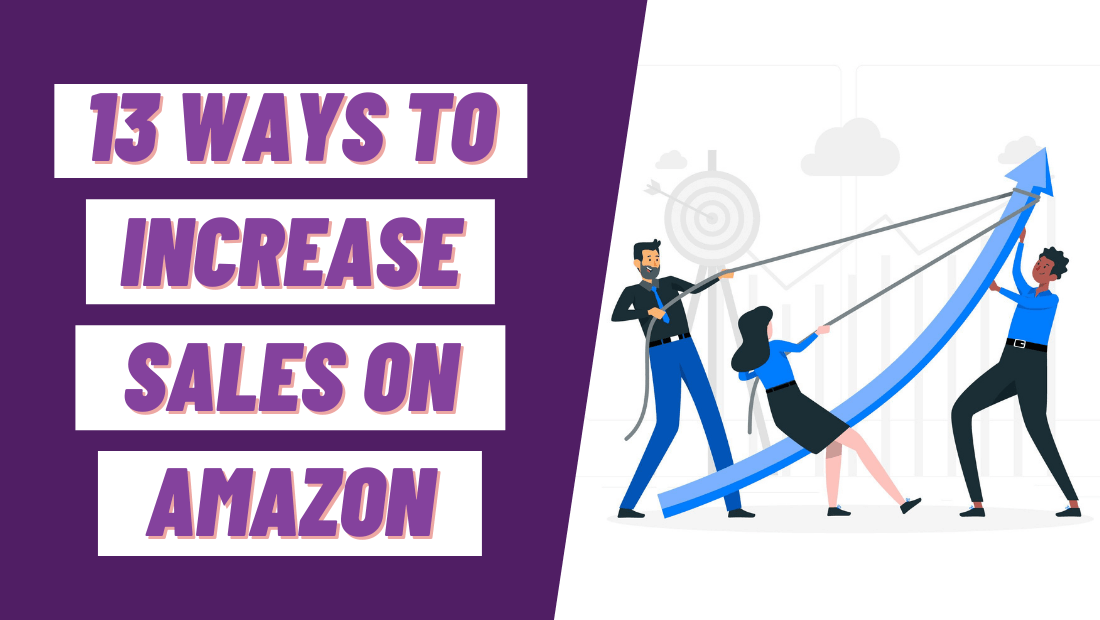As an Amazon seller, you’re constantly focused on driving sales, optimizing your product listings, and providing top-notch customer service. However, there is one element that often goes overlooked in the hustle of running a successful e-commerce business: invoices. In this comprehensive guide, we’ll delve into the often underestimated but critically important role of invoices in your Amazon business. From understanding the significance of accurate invoicing to utilizing efficient tools like Amazon invoice generator and receipt generator, we will unravel the key strategies for streamlining your financial processes and ensuring compliance with Amazon’s stringent guidelines.
Imagine a scenario where every sale you make on Amazon is seamlessly accompanied by a professional invoice that not only satisfies customer expectations but also safeguards your business from potential disputes or claims. With the right approach to invoicing, you can elevate your brand’s credibility while enhancing operational efficiency.
Quick Guide:
- Why is an Invoice Important for Your Amazon Business?
- Where to Find an Invoice on Amazon
- How to Create an Invoice on Amazon
- Can You Fake an Amazon Invoice?
- How to Use an Online Amazon Invoice Generator
- Top Invoice Generator Tools for Amazon Sellers
- Fake Amazon Invoice Generators – The Risks and Consequences
- Conclusion
Why is an Invoice Important for Your Amazon Business?
In the intricate tapestry of an Amazon business, an invoice emerges as a critical element, serving diverse purposes that extend far beyond a mere record of transactions. Let’s delve into the specific reasons why an invoice holds immense importance for the flourishing of your e-commerce venture.
Legal Compliance and Regulatory Requirements
In the labyrinth of e-commerce regulations, adherence to legal requirements is not just advisable—it’s mandatory. Invoices are pivotal in ensuring your Amazon business complies with local and international laws. They provide a tangible record of every transaction, detailing the terms and conditions agreed upon by both parties. This not only safeguards your business from potential legal repercussions but also fosters an environment of transparency and accountability.
Building Trust with Customers and Business Partners
Trust is the cornerstone of any successful business, and in the digital realm of Amazon, where face-to-face interactions are absent, trust becomes even more paramount. An invoice is a formal acknowledgment of a completed transaction, offering your customers a tangible document reflecting professionalism and reliability. Furthermore, it establishes a sense of transparency, showcasing a commitment to clear communication and ethical business practices. For business partners, such as suppliers or distributors, providing accurate and detailed invoices is a testament to your commitment to fair and honest dealings.
Tracking Sales and Financial Transactions
In the dynamic landscape of e-commerce, where transactions occur rapidly, keeping a meticulous record of sales and financial transactions is crucial. An invoice is a comprehensive ledger, allowing you to track each sale precisely. This not only aids in monitoring revenue but also offers insightful data on customer preferences and product performance. The data derived from invoices empowers you to make informed decisions, optimize your product offerings, and develop pricing strategies for sustained business growth.
Facilitating Smooth Accounting Processes
Efficient accounting is the backbone of any well-run business. Invoices streamline the financial aspects of your Amazon venture by providing a structured and organized account of your transactions. This expedites the reconciliation process and minimizes the risk of errors and discrepancies. With accurate and readily available invoicing data, your accounting processes become more transparent, allowing smoother audits and financial assessments.
Where to Find an Invoice on Amazon
In the bustling ecosystem of Amazon Seller Central, finding an invoice is a straightforward yet crucial process. Navigating the platform seamlessly is essential for sellers to access and manage their transactional documentation. In this section, we will guide you through the steps to locate your invoices efficiently and gain a comprehensive understanding of the various types available.
Navigating the Amazon Seller Central Dashboard
- Log in to Seller Central: Begin by logging into your Amazon Seller Central account. This is your gateway to the tools and resources for managing your Amazon business.
- Go to “Orders”: Once logged in, locate the “Orders” tab on the main dashboard. This section is the central hub for managing all your orders and transactions.
- Access “Order Reports”: Within the “Orders” section, you’ll find an option for “Order Reports.” Click on this to access detailed reports that include invoicing information.
- Filter by Date Range or Order ID: To narrow your search, utilize the various available filters, such as date range or specific order ID. This ensures you retrieve the exact invoice you’re looking for.
Locating and Accessing Order Details
- Select a Specific Order: Within the “Order Reports,” choose the specific order for which you need an invoice. Clicking on the order will give you a detailed view of that transaction.
- Access Invoice Information: Look for an option or tab labeled “Invoice” or “Invoice Details.” You’ll find a transaction breakdown, including pricing, quantities, and shipping details.
- Download or Print: Amazon typically provides options to download or print the invoice directly from this section. Choose the appropriate action based on your record-keeping preferences.
Understanding the Various Types of Invoices Available
Commercial Invoice:
A commercial invoice may be required for customs clearance for international transactions. This document provides a detailed list of the products shipped, their value, and other relevant information.
Proforma Invoice:
This is a preliminary invoice issued before the actual shipment of goods. It outlines the transaction details and serves as a commitment to deliver the products.
Sales Invoice:
The standard invoice is issued upon the completion of a sale. It includes essential product descriptions, quantities, prices, and total amounts.
Understanding these different types of invoices allows you to choose the most relevant document for specific business needs or regulatory requirements.
How to Create an Invoice on Amazon
The ability to generate invoices seamlessly is a valuable skill in Amazon’s business operations. Creating an invoice within Amazon Seller Central streamlines your financial processes and ensures compliance and transparency in your transactions. In this section, we’ll provide you with a step-by-step guide on generating an invoice, insights on customization, and essential information.
Step-by-Step Guide to Generating an Invoice within Amazon Seller Central
- Log in to Seller Central: Access your Amazon Seller Central account using your credentials.
- Navigate to Orders: Locate and click on the “Orders” tab on the main dashboard. This will lead you to the central hub for managing your transactions.
- Select “Manage Orders.”: In the “Orders” section, click “Manage Orders.” This will display a list of your recent orders.
- Choose an Order: From the list of orders, select the specific order for which you want to create an invoice. Click on the order to access its details.
- Click on “Invoice”: Look for an option labeled “Invoice” or “Create Invoice.” Clicking on this option initiates generating an invoice for the selected order.
- Review and Confirm Details: Verify that all details in the pre-populated invoice form are accurate. This includes product descriptions, quantities, prices, and shipping information.
- Submit the Invoice: Once you’ve reviewed the details, submit the invoice. Amazon will then generate the document, and you will typically have the option to download or print the invoice for your records.
Customizing Invoices to Meet Specific Business Needs
- Access Invoice Customization Settings: Navigate to the “Settings” or “Account Settings” section within Seller Central. Look for options related to invoicing or documents.
- Explore Customization Features: Amazon often allows sellers to customize certain elements of their invoices. This may include adding a business logo, customizing formatting, or including specific messaging.
- Adjust Invoice Fields: Depending on your business needs, you may be able to adjust which fields are displayed on the invoice. This allows you to tailor the document to include the most relevant information to your customers or for your record-keeping.
Adding Essential Information for Compliance and Transparency
- Include Seller Information: Ensure that your seller information, including your business name, address, and contact details, is prominently featured on the invoice.
- Itemize Products and Services: Provide a detailed breakdown of each product or service included in the transaction. This should include product descriptions, quantities, unit prices, and applicable taxes or fees.
- Specify Payment Terms: Clearly outline the payment terms, including the due date and any relevant late fees or discounts for early payment.
- Include Legal Information: Depending on your jurisdiction and the nature of your products, including any legally required information such as tax identification numbers or regulatory compliance details.
Can You Fake an Amazon Invoice?
In the world of e-commerce, where trust and transparency are paramount, the question of producing fake invoices raises serious ethical and legal concerns. In this section, we’ll explore the risks and consequences of generating counterfeit Amazon invoices, emphasizing the importance of integrity in e-commerce and shed light on the potential legal implications and penalties for fraudulent activities.
Risks and Consequences of Producing Fake Invoices
- Loss of Trust: Counterfeit invoices erode the foundation of trust between buyers and sellers. Customers and business partners rely on the authenticity of transactional documents, and any breach of this trust can lead to severe repercussions.
- Account Suspension: Amazon takes a firm stance against fraudulent activities, and producing fake invoices directly violates their policies. Sellers caught engaging in such practices risk suspending their accounts or being permanently banned from the platform.
- Legal Ramifications: Beyond the platform-specific consequences, generating fake invoices constitutes fraud, a criminal offense with potential legal consequences. This may involve legal action from both Amazon and affected parties, leading to financial penalties or even imprisonment.
The Importance of Maintaining Integrity in E-commerce
- Preserving Reputation: Integrity forms the cornerstone of a successful e-commerce business. Maintaining honesty and transparency in all dealings, including invoicing, contributes to a positive reputation, fostering customer loyalty and attracting business partners.
- Building Customer Confidence: Genuine and transparent transactions build confidence among customers. When they perceive that a seller operates with integrity, they are likelier to make repeat purchases and recommend the business to others.
- Long-Term Success: E-commerce businesses thrive on repeat business and positive word-of-mouth. By upholding ethical standards, sellers lay the groundwork for sustainable success, free from the pitfalls associated with deceptive practices.
Legal Implications and Potential Penalties for Fraudulent Activities
- Civil Lawsuits: Sellers engaging in fraudulent invoicing may face civil lawsuits from affected parties, including customers, business partners, or competitors. Legal actions can result in significant financial damages and tarnish the business’s reputation.
- Criminal Charges: Fraudulent activities, including creating fake invoices, can lead to criminal charges. Legal authorities may pursue charges such as wire fraud, mail fraud, or forgery, carrying severe penalties, including fines and imprisonment.
- Regulatory Compliance Issues: Violating e-commerce regulations and laws can attract the attention of regulatory bodies. Sellers may face penalties for non-compliance, further damaging their business prospects.
How to Use an Online Amazon Invoice Generator
As Amazon sellers strive for efficiency and accuracy in their business operations, using online invoice generators becomes a valuable asset. In this section, we’ll explore the available tools, provide a step-by-step guide on using a third-party invoice generator, and emphasize the importance of ensuring accuracy and compliance with the generated invoices.
Exploring Available Online Tools
- Research and Selection: Begin by researching reputable online Amazon invoice generators. Consider factors such as user features, reviews, and pricing. Select a tool that aligns with your business needs.
- Trial Periods: Many invoice generator tools offer trial periods. Take advantage of these trials to explore the functionality and suitability of the tool for your Amazon business.
- Consider Integration: Some tools integrate seamlessly with Amazon Seller Central, streamlining invoicing. Evaluate whether the chosen tool offers such integrations to enhance workflow efficiency.
Step-by-Step Guide to Using a Third-Party Invoice Generator
- Create an Account: Sign up for an account on the chosen invoice generator platform.
- Input Business Information: Provide essential business details such as your name, address, and contact information. This ensures that the generated invoices reflect accurate seller information.
- Customize Invoice Template: Tailor the invoice template to match your brand identity. Many invoice generators allow colors, logos, and additional branding elements to be customized.
- Add Product/Service Details: Input product or service descriptions, quantities, prices, and applicable taxes or fees. Ensure accuracy to avoid discrepancies in your financial records.
- Include Customer Information: Input customer details, including their name, address, and contact information. This is crucial for creating a comprehensive and professional invoice.
- Choose Payment Terms: Specify the payment terms, including the due date and any relevant terms and conditions. Communicate expectations to avoid misunderstandings.
- Generate and Download: Once all necessary information is entered, generate the invoice. Most platforms allow you to download the invoice in various formats, such as PDF or Excel, making it easy to share or print.
Ensuring Accuracy and Compliance with Generated Invoices
- Review Thoroughly: Before sending or using the generated invoice, review it thoroughly. Check for any errors, omissions, or inconsistencies.
- Legal Compliance: Ensure the generated invoice complies with legal requirements, including tax regulations and other applicable laws in your jurisdiction.
- Store for Record Keeping: Keep a digital and organized record of all generated invoices for future reference, audits, or compliance checks.
Top Invoice Generator Tools for Amazon Sellers
As the e-commerce landscape evolves, so do the tools designed to streamline business operations. Here, we’ll review three popular and reliable invoice generator tools – Zoho Invoice, FreshBooks, and Invoicely – exploring their features and functionalities.

Features:
- User-friendly interface with customizable templates.
- Time tracking and project management capabilities.
- Automatic invoice reminders and recurring invoices.
- Integration with various payment gateways.
Functionality:
- Zoho Invoice simplifies the invoicing process with intuitive features, making it suitable for businesses of all sizes.
- Its time-tracking and project management tools provide comprehensive solutions for service-based businesses.
FreshBooks

Features:
- Cloud-based platform with mobile accessibility.
- Automated expense tracking and receipt management.
- Advanced reporting and analytics.
- Multi-currency invoicing for international transactions.
Functionality:
- FreshBooks is known for its user-friendly interface and comprehensive features, making it an ideal choice for freelancers and small to medium-sized businesses.
- The expense tracking and reporting features contribute to overall financial management.
Invoicely

Features:
- Customizable invoice templates with multi-language support.
- Expense tracking and time management features.
- Integration with popular payment gateways.
- Client portal for easy communication.
Functionality:
- Invoicely caters to freelancers and small businesses, offering a range of features for efficient invoicing and client management.
- The client portal enhances communication and collaboration between sellers and their clients.
Fake Amazon Invoice Generators – The Risks and Consequences
Some sellers may be tempted to explore shortcuts in the quest for streamlined business processes, including fraudulent invoice generators. However, the risks and consequences associated with such deceptive practices are substantial. This section delves into the dangers of using fake Amazon invoice generators, the legal ramifications for sellers, and the profound impact on reputation and customer trust.
Recognizing the Dangers of Using Fraudulent Invoice Generators
- Inaccuracy and Unreliability: Fake invoice generators often lack the precision and accuracy necessary for legitimate transactions. Inaccurate invoicing can lead to financial discrepancies, customer disputes, and potential legal issues.
- Violation of Platform Policies: Major e-commerce platforms, including Amazon, have strict policies against fraudulent activities. Utilizing fake invoice generators violates these policies and can result in severe penalties, including account suspension or termination.
- Compromised Customer Relationships: Deceptive practices erode the trust established with customers. When customers discover transaction inconsistencies, it can lead to dissatisfaction, loss of confidence, and negative reviews.
Legal Consequences for Sellers Engaging in Deceptive Practices
- Fraud Charges: Creating fake invoices is considered a form of fraud. Sellers engaging in such practices may face legal consequences, including wire fraud, mail fraud, or forgery charges.
- Civil Lawsuits: Sellers may be subjected to civil lawsuits from affected parties, such as customers or business partners, seeking compensation for financial losses or damages incurred due to fraudulent invoicing.
- Criminal Penalties: Beyond civil lawsuits, sellers involved in fraudulent activities may face criminal penalties, including fines and imprisonment, as authorities take a strong stance against deceptive practices.
Impact on Reputation and Customer Trust
- Negative Reviews and Publicity: News of fraudulent activities can spread quickly, leading to negative reviews and public backlash. Such negative publicity can severely damage the reputation of the business.
- Loss of Customer Trust: Trust is hard-earned and easily lost. Sellers found that using fake invoice generators risks losing the trust of their customer base, impacting customer loyalty and future business opportunities.
- Diminished Brand Value: A tarnished reputation extends beyond immediate consequences. The long-term impact can result in diminished brand value, making it challenging for the business to recover and regain consumer confidence.
Conclusion
In the fast-evolving e-commerce landscape, honesty, and integrity are pillars for sustainable success. The risks associated with using fake Amazon invoice generators are not worth the temporary convenience they might offer. Sellers are urged to prioritize transparency, legal compliance, and ethical practices to build a resilient and trustworthy Amazon business.
As this comprehensive guide comes to a close, Amazon sellers are encouraged to leverage legitimate tools and processes, such as online invoice generators, to enhance efficiency while maintaining the highest standards of integrity. By doing so, sellers can confidently navigate the complexities of e-commerce, ensuring their Amazon businesses’ longevity and success.




